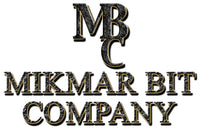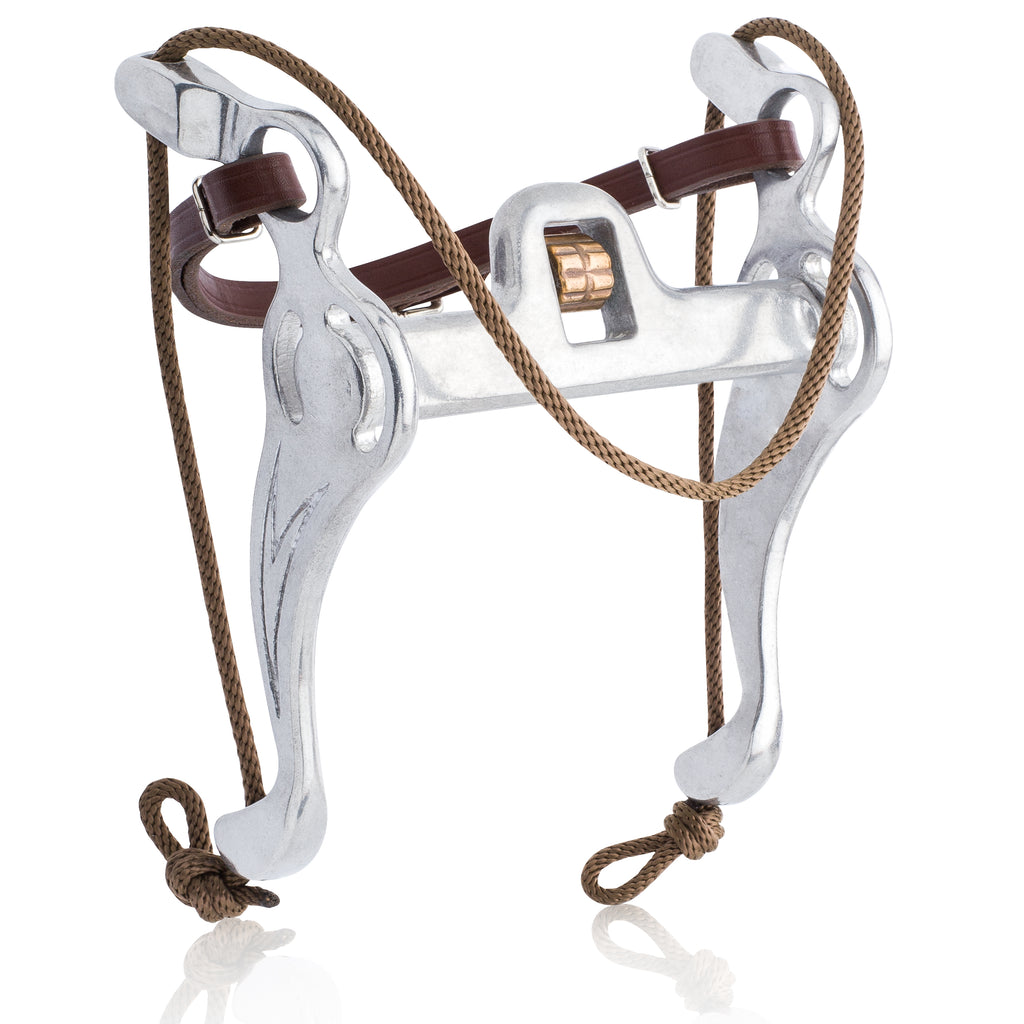The late Frank Evans, inventor of Mikmar Bits and founder of the company, designed the Mikmar Training Bit in 1953. It is well-known for its unique lightweight design, versatility, and excellent results, despite its curious first impression. Frank Evans said, "because of the way this bit works, you are able to protect a horse's mouth and at the same time get desired results. It sends a clearer signal to the horse, allowing the rider to use a softer hand." The Mikmar Training Bit operates through leverage, with the addition of nose pressure.
-
The Training Bit DISPERSES PRESSURE to the nose, mouth, chin, and poll areas. This lightweight bit (14 ounces) was designed to develop vertical flexion, correct carriage, or just a good mouth. It works well for WESTERN disciplines.
-
The rein is attached to the NOSE ROPE and puts mild pressure across the nose and takes some concussion out of the mouth. It softens the feel of the bit, and slows it's action by dispersing the pressure to 4 areas on the head, the nose, mouth, chin and poll, giving the horse time to react to a request in a NON-ABRUPT way. When you put pressure on the reins (pull) this long shanked bit activates very slowly, it is forgiving contrary to its appearance.
-
The unique MOUTHPIECE is wide, flat and slow activating. It does not roll over fully or quickly and gives the horse time to react to a request. It is non-pinching, with a copper roller that stimulates saliva, keeps a nervous horse pacified, and encourages the horse to loosen and soften in the jaw. Available with the Standard mouthpiece or in a Low Port version- 3/4" less in height.
-
Discourages bit evasions like head tossing and high headedness, pulling, rooting, and defensive, nervous behaviors.
-
Encourages responsiveness, correct carriage, vertical flexion, collection, control, and relaxation.
-
Well known for producing professional results for the amateur trainer. Extremely popular for Trail/Pleasure riding, preparing the Western Show horse, and Gaited horses. It is excellent for re-schooling horses with bit evasion issues and produces a good head set.
CLICK THE VIDEO BELOW TO BETTER UNDERSTAND THE BIT.


